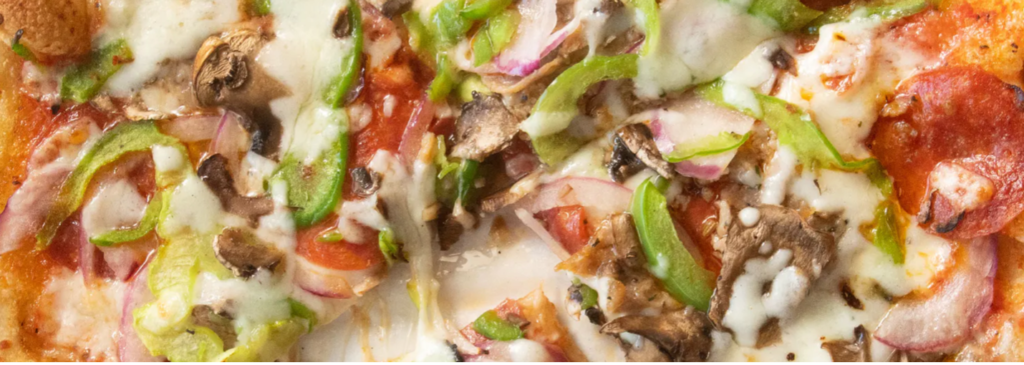October 25, 2021
Here’s How Chains are Reinventing How Food is Made…
Tony Treadway

And How Food Manufacturers Can React


The ramifications of the pandemic on how food is made in a restaurant have a significant impact on how food manufacturers sell products to them. Here’s a story with multiple insights for every sales team.
At CREATE, a conference for chain restaurants in Denver, I met a pioneer in the transformation, Elliot Schiffer, CEO of Mici Handcrafted Italian. It’s a fast-growing six-unit chain in Denver that has just signed up a franchisee who’ll build 30 Mici’s in Arizona over the next few years. It’s an ideal target for a food manufacturer that hopes to grow its sales with an emerging chain.

Schiffer learned his trade under the tutelage of Rich Melman’s Lettuce Entertain You group and later at Smashburger. His background made him shudder when he showed up at Mici, and he quickly pivoted on how his chain makes and serves food.
“When I showed up, the best our kitchens could do was push out $1,100 in food per hour,” Schiffer said. “I knew I had to act and today, that number is now $3,500.” He went about hacking items off the menu to eliminate labor-intensive items that were not great sellers.
“Funny thing, every time we take something off the menu, our sales go up 10 percent.”
Elliot Schiffer, CEO
Mici Handcrafted Italian
“Every Italian restaurant wants prosciutto on their menu, but it’s a nightmare to prepare. Slicers are one of the worst safety hazards in the kitchen, and you have to semi-freeze it before it slices properly, plus it’s expensive. So, prosciutto is gone. In fact, before the pandemic, we were buying 200 SKUs of products and ingredients, and today, we have it down to around 150.” For a food manufacturer, those kinds of statements are chilling.

“Funny thing, every time we take something off the menu, our sales go up 10 percent,” Schiffer says. “We eliminated soup, cookies, and panini while serving what we do offer faster and more efficiently. Now our focus is at our core menu of extraordinarily crafted pizza that our customers love.”
“You have to reduce prep in the kitchen but keep some of your most important prep and make it better,” he says. So, his team still makes pizza dough in the kitchen but outsources some of his prep to third-party commissaries. “We were making meatballs by hand in house. They were inconsistent from unit to unit. We outsourced meatballs that are now still hand-made more consistently through our commissary. We also outsourced our marinara to the commissary who is making it to our specifications.” It is an important takeaway for food manufacturers who should now be approaching third-party commissaries as new sales targets.
Schiffer also increased the efficiency of his most important asset, his digital marketing. While his dine-in business in Mici’s 1,000 square-foot restaurants is now about 15 percent of his business, lessons from his delivery and carry-out only days during the pandemic are now paying off.
“We really improved our marketing of our loyalty program which has had a tremendous impact,” Schiffer explains. “We’ve gone from 16 percent of our customers being loyalty members to 76 percent. We have automated the process for identifying lapsed loyalty club members. If they haven’t purchased anything in 90 days, we reach out and offer them a free pizza. We give away a lot of pizza and that is not a bad thing if you can get them back in the habit of coming to Mici’s.”
The company’s latest insight is in how they serve carryout customers. “Today, about 50 percent of our customers are carryout. We thought they would appreciate watching us bag up their orders, making sure that their pizza was still hot, and their salad was still cold. Yet, we saw that if they had to wait for more than a few minutes they were getting frustrated. After the pandemic, customers don’t want to talk to someone, they just want to pick up their food and leave. Thus, hospitality today isn’t about a nice conversation, it’s about ‘give it to me quickly and it better be good,” says the CEO. “We’re now developing stations where customers see their order and just take it out the door.”
Mici’s is also doubling down on negotiating its purchases from food suppliers. As more units are added, Schiffer is looking to trade pricing for volume during rampant food cost increases and shortages. The takeaway is to negotiate based on a long-term contract on items you best feel can be relied on for supply over the next year.
Mici’s is a great example of how the market is shifting and where opportunities are emerging. If you are interested in making your sales and marketing more impactful in ’22, let’s talk. We can help.
Get insights delivered straight to your inbox.